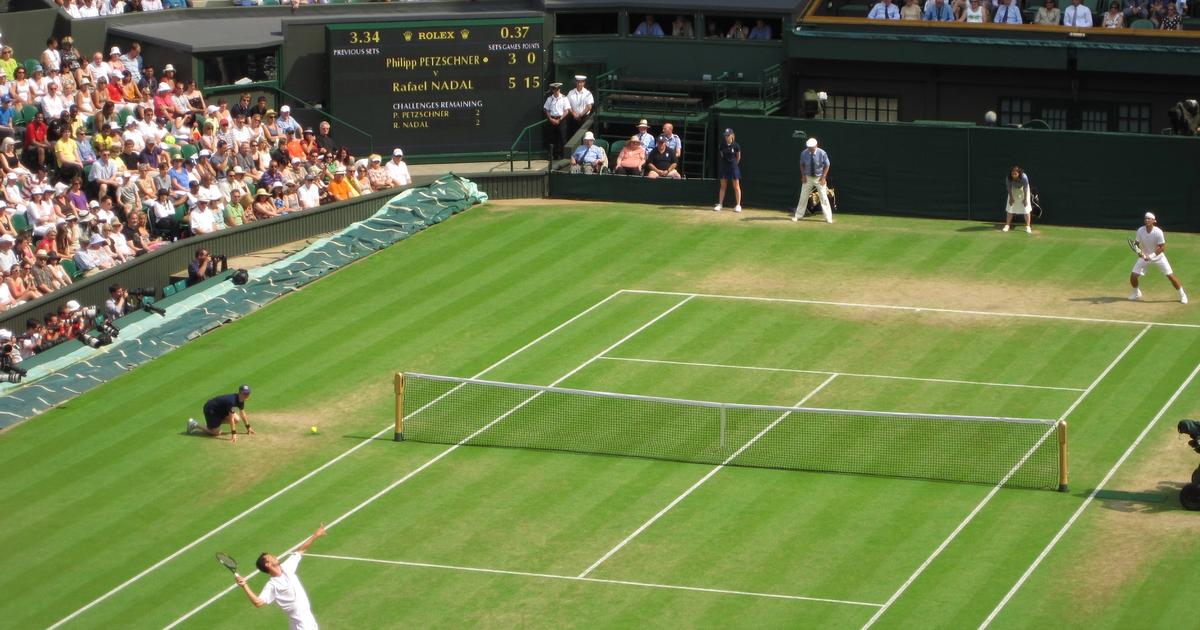(Photo credit: Melanie Seasons)
Nishikori’s second serve vs Djokovic’s return
The similarities in Novak Djokovic and Kei Nishikori’s games are obvious, with both men excellent baseliners, confident stepping into the court to dictate and able to counterpunch from the back foot. They are also evenly matched off the ground, with Nishikori having the slightly better forehand and Djokovic holding an equally small advantage on the backhand side. Both are also excellent returners. Though no one is in Djokovic’s league when an opponent steps to the line, Nishikori is as close as anyone.
But where Djokovic holds the clear advantage is on his own serve, which is more powerful and accurate than Nishikori’s. His greater height, the Serbian stands 6’2” tall whilst Nishikori is four inches shorter at 5’10, allows him greater variety on second serves particularly. Nishikori is limited by having to put extra kick on the ball to ensure it crosses the net because he cannot make contact with the ball as high as Djokovic can.
That makes the slice serve, which Djokovic uses fairly often, a much riskier option for the Japanese, one he can rarely afford to take with his second delivery. That vulnerable second serve has been exploited by Djokovic in most of their matches. Nishikori lost the majority of points behind it in both Madrid and Rome where they met earlier this season. The Japanese’s first serve percentage has been at around 70% so far this tournament and he will need to maintain that high level to have a chance.
RealSport’s prediction: Djokovic in four.
Rafael Nadal’s backhand vs del Potro’s forehand
Nadal has played excellently to reach his first Wimbledon quarterfinal since 2011, but faces a huge step up in quality against del Potro. Whilst the likes of Vesely and Kukushkin, who Nadal accounted for in straight sets, have power, del Potro is in another category. Not only does the Argentine hit the ball harder than either, particularly off his devastating forehand, he is also more accurate. Where Nadal could make balls and rely on Vesely and Kukushkin to miss eventually, del Potro won’t.
Nadal was able to tame the del Potro attack in Paris last month, but on a grass court the Spaniard will know he will need to be more proactive. The key for him will be to take the del Potro forehand out of the equation, because the fifth seed, for all his talent, doesn’t have anything like the variety to beat Nadal without his biggest weapon. Fortunately for Nadal he knows the blueprint for how to do just that after playing a nearly perfect match tactically to beat del Potro in New York last year.
There, in the first set Nadal went mainly to del Potro’s backhand in an attempt to break it down. But del Potro defends his weaker side excellently having made up for his lost power with accuracy. As a result, he was too often able to bring his forehand into play on his terms. But when Nadal started taking his backhand hard cross-court into del Potro’s forehand, he was rewarded with del Potro errors. It’s a strategy that requires perfect execution, but it also provides Nadal with his best route to victory.
RealSport’s prediction: Nadal in five.
Federer’s forehand vs Anderson’s mobility
Whilst the main strength in Anderson’s game is unsurprisingly his serve, he is a more than competent baseliner. He’s a class above the likes of Isner, Karlovic or even arguably Raonic in that regard. His forehand is a real weapon, and it will be crucial to his chances of upsetting Federer. Because as well as Federer defends, the Swiss does not like dealing with pace and depth into his forehand side.
On the backhand side he will simply slice it back and trust to his movement to keep him alive. But on the forehand he can be drawn into forehand to forehand exchanges and that’s where Anderson can beat him. He’ll have to accept that he will be burned by some flashing winners from Federer, but the likes of del Potro and Zverev, and to a lesser extent Kokkinakis in Miami, have shown that Federer can be forced into mistakes on his forehand.
Of course, that’s easier said than done, and Anderson will have to cope with Federer’s variety and accuracy off the ground. That accurate hitting may well be his undoing. As well as Anderson’s strikes the ball when he has time on it, get him moving and he can be exposed, particularly on the backhand side. He also doesn’t volley well so if Federer is able to draw him into the net on the Swiss’ terms, Anderson will find himself in trouble.
RealSport’s prediction: Federer in three.
Isner’s forehand vs Raonic’s forehand
It’s obvious that both Isner and Raonic will win the overwhelming majority of the points behind their serves in this match. Both are well-capable of getting their serves up above the 140 mph mark and have hit over 100 aces already this tournament, putting them some way out in front in the ace race. But some serves will come back across the net, and then both men will be relying on their forehands to win them the point most of the time.
Both are powerfully equipped in this department, but lacking in confidence and reliability on the backhand side. So getting the first strike in with their forehand could decide the majority of points that the serve doesn’t. But over press with their forehands and unforced error counts will creep up to a costly extent. For both men, but particularly Isner who can be rash off the ground, it will be important to choose when to strike. Too much caution and too much aggression will both be equally costly.
RealSport’s prediction: Raonic in four.
Explore new topics and discover content that's right for you!
News



